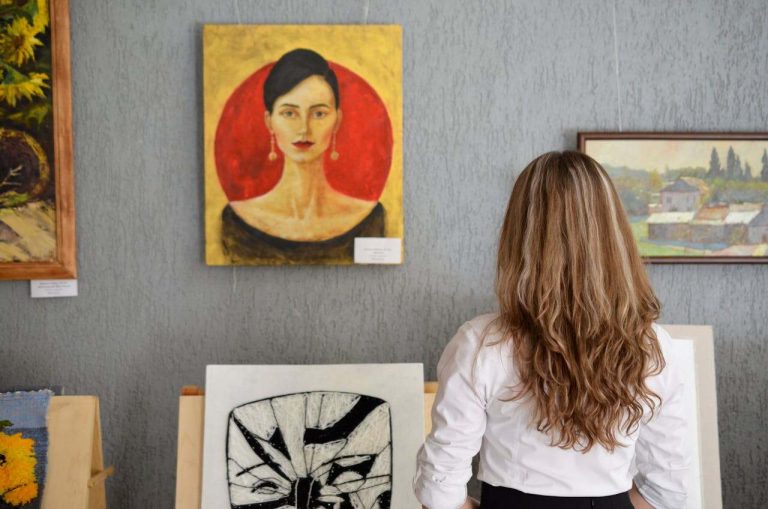As a seasoned writer and mentor in the IB Diploma Programme, I’ve guided numerous students through the intricacies of Internal Assessment (IA) writing. Today, I’m eager to share insights and tips to help you choose the perfect option among different Visual Arts IA topics. According to general IB criteria and from my vast experience, the right topic sparks your interest and also meets the rigorous standards of the IB DP Visual Arts course.
What Is IB DP Visual Arts Course?
The Visual Arts course is integral to the IB Diploma Programme, designed for students aged 16 to 19. This two-year course encourages students to challenge their creative and cultural expectations and boundaries. The thought-provoking course inspires students to develop their creative skills, critical thinking, and a deeper appreciation for the arts. Now, let’s look at all the key features of the course:
- Students engage in practical and theoretical study, encouraging them to develop their creative work through various media and techniques.
- The course emphasizes the development of critical thinking and analysis, encouraging students to evaluate their work and that of others.
- It aims to deepen students’ understanding of art as a dynamic and global form of communication and foster an appreciation of diverse cultural perspectives.
- Students undertake research into artists, cultures, and different art forms and reflect on how these influence their work.
- A significant component of the course is curating and presenting an art exhibition, where students showcase their work and demonstrate their understanding of the creative process.
The IB DP Visual Arts course assessment includes internal and external evaluations. This course is ideal for students passionate about the arts, whether they aim to pursue art in higher education or simply wish to develop their understanding and appreciation of the visual arts as part of a well-rounded education. It suits creative students who enjoy problem-solving and are interested in exploring art’s role in society and different cultures.
Get Help With Your Paper
Understanding Visual Arts Internal Assessment
This comprehensive project culminates your learning path in the IB DP Visual Arts course, offering a platform to express your artistic curiosities in a structured and reflective manner. Drawing from my extensive experience with the IB curriculum, I’ve noted that the most impactful and rewarding IAs are born from a student’s genuine interest in a specific artistic theme or question.
When discussing the criteria delineating an outstanding Visual Arts IA, it’s crucial to highlight some components beyond originality, depth of investigation, and coherence. First, the capacity for critical thinking stands out as an indispensable skill. The ability to create and critically evaluate art, including your own, according to established artistic standards and contexts is vital. This evaluation process should be evident in your written work, showing a sophisticated understanding of the art world and your place within it.
An exceptional IA meets strict word count requirements and demonstrates a clear vision from conceptualization to execution. Your practical work should reflect technical skill and creativity and embody a deep understanding of the concepts you’re researching. The IA differs from extended essay writing. Remember, the coherence between your artistic intent and the final output is a testament to the thoughtfulness and depth of your investigation.
Lastly, engagement with the art community, whether through interviews, gallery visits, or consultations with artists and educators, can enrich your IA immeasurably. This engagement reflects an openness to learning and an understanding that art does not exist in a vacuum but is a dynamic field influenced by myriad factors and voices.
IB Visual Arts IA Topics and Research Questions
Below, I’ve outlined some topic ideas tailored for SL and HL students, each with a potential research question.

Standard Level (SL) IB Visual Arts IA Topics
This level is suited for students with a strong interest in Visual Arts but may not necessarily wish to pursue art at a university level or as a career. SL students may consider these topics:
- The Evolution of Portrait Photography: From Formal to Casual. How has the evolution of portrait photography influenced contemporary social media culture?
- Street Art and Social Messages: A Local Perspective. In what ways does street art in my community reflect social or political concerns?
- Traditional Textiles in Modern Fashion. How are traditional textiles being incorporated into modern fashion designs?
- The Influence of Pop Art on Advertising. How has Pop Art influenced modern advertising techniques and aesthetics?
- Environmental Concerns in Contemporary Sculpture. How do contemporary sculptors use their works to address environmental issues?
- Digital Art as a Legitimate Art Form. What arguments support recognizing digital art as a legitimate art form alongside traditional mediums?
- The Renaissance Influence on Modern Western Art. In what ways can the influence of Renaissance aesthetics be observed in modern Western art?
- Ceramics: Traditional Techniques in the 21st Century. How have traditional ceramics techniques been preserved or altered in contemporary practice?
- Animation: Art or Entertainment? Should animation be considered a form of art or solely entertainment?
- The Role of Museums in Preserving Indigenous Art. How do museums contribute to the preservation and understanding of indigenous art forms?
- Art Therapy: Benefits and Techniques. What are the primary benefits and techniques of art therapy?
- The Impact of Social Media on Young Artists. How does social media affect the visibility and business practices of young artists?
- Photorealism: Technique and Perception. What techniques do photorealistic artists use to alter perceptions of reality?
- The Influence of Music on Abstract Painting. How can music influence the creation and interpretation of abstract paintings?
- Eco-Art: Creating with Recycled Materials. How do artists use recycled materials to create eco-art, and what messages do they convey?
- The Art of Origami and Its Cultural Significance. How does origami blend art and mathematics, and what cultural significance does it hold in Japanese society?
- The Impact of Social Media on Public Art Installations. How has social media influenced the design and public engagement of art installations?
- Reviving Folk Art Traditions in the Modern World. In what ways are artists reviving folk art traditions, and what motivates their resurgence today?
- The Role of Art in Community Healing Post-Disaster. How can art contribute to community healing and resilience after natural disasters?
- Symbolism in Medieval Art. What symbols were commonly used in medieval art, and what did they represent?
- The Influence of Video Games on Visual Art. How have video games influenced visual art styles and techniques in the 21st century?
- Street Photography: Documenting Urban Life. How does street photography capture and influence the perception of urban life?
- The Renaissance of Calligraphy in the Digital Age. How is the art of calligraphy being preserved and transformed in the digital age?
- Art and Fashion: The Influence of Famous Paintings on Fashion Design. How have famous paintings influenced modern fashion design and trends?
- The Use of Recycled Materials in Jewelry Design. How do artists use recycled materials to create innovative and sustainable jewelry designs?
These topics can encourage deep thought and creative research, supporting SL students in creating impactful art projects and research within the IB Visual Arts course.
Higher Level (HL) IB Visual Arts IA Topics
HL is ideal for students considering further education, a career in Visual Arts, or related fields. For this level, consider these topics:
- The Intersection of Art and Technology: A New Aesthetic. How is technology shaping new aesthetic movements in contemporary art?
- Art as a Tool for Political Resistance. How has art been used for political resistance in authoritarian regimes?
- The Psychological Impact of Color in Abstract Art. What psychological impacts do colors have in abstract art, according to contemporary research?
- Surrealism and the Unconscious Mind. How do Surrealist artists explore the unconscious mind, and what methods do they employ?
- The Ethical Implications of AI in Art Production. What are the ethical implications of using artificial intelligence in creating art?
- Cultural Appropriation vs. Appreciation in Contemporary Art. Where is the line between cultural appropriation and appreciation in contemporary art?
- The Revival of Forgotten Art Techniques. Which forgotten art techniques are being revived, and what drives their resurgence?
- Art in the Digital Age: Ownership and Originality. How do concepts of ownership and originality in art change in the digital age?
- The Role of Performance Art in Social Activism. How is performance art used as a form of social activism, and what are its impacts?
- Gender Representation in Classical vs. Modern Art. How has gender representation in art evolved from classical to modern times?
- The Impact of Art on Mental Health. What is the impact of creating and viewing art on mental health?
- Postmodernism: An Analysis of its Influence on Contemporary Art. How has postmodernism influenced contemporary art forms and artists?
- The Globalization of Art Markets. How has globalization affected local art markets and artists?
- Eco-Criticism in Art: A Study of Environmental Art. How do environmental artists contribute to eco-criticism, and what techniques do they use?
- The Evolution of Interactive Art Installations. How have interactive art installations evolved, and how do they engage the public with art?
- The Philosophical Underpinnings of Abstract Expressionism. What philosophical ideas underpin the abstract expressionist movement, and how are they expressed through art?
- Artistic Responses to Climate Change. How are contemporary artists addressing the issue of climate change through their works?
- The Intersection of Biotechnology and Art. How is biotechnology being used by artists to explore new frontiers in art?
- The Concept of Post-Humanism in Contemporary Art. How do contemporary artists explore the concept of post-humanism, and what implications does this have for the future of humanity?
- The Role of Art in the Digital Revolution. What role does art play in reflecting and shaping the digital revolution?
- Investigating the Influence of Surrealism on Modern Cinema. How has Surrealism influenced modern cinema, particularly in depicting dreams and the subconscious?
- Art as a Medium for Social Change in the 21st Century. How is art used as a medium for social change, and what are some notable examples?
- The Evolution of Public Art: From Graffiti to Digital Projections. How has public art evolved from graffiti to digital projections, and what does this say about societal changes?
- The Psychological Effects of Color in Abstract Art on Viewers. What are the psychological effects of color in abstract art on viewers, and how do artists exploit this?
- The Fusion of Art and Science in Contemporary Sculpture. How are contemporary sculptors fusing art and science, and what are the outcomes of such collaborations?
These topics and research questions are designed to stimulate critical thinking and creative exploration for the rigorous demands of the IB Visual Arts HL courses.
You Might Also Like:
- Theatre IA Topics
- Dance IA Topics
- Music IA Topics
- Film IA Topics
- Economics IA Topic Ideas
- Computer Science IB IA Topics
- Physics IB IA Topic Ideas
- 20 IB Chemistry IA Topics
- Biology IA Topics (No Experiment)
- Geography IA Ideas
Conclusion
In conclusion, selecting the right Visual Arts IA topic requires introspection, research, and careful planning. Remember, the best themes meet the IB criteria and ignite your passion for art. Approach this task with an open mind and a commitment to exploring your creative boundaries. I am confident that with the right approach, you’ll choose a compelling topic and produce a work you’re proud of. Also, our IB experts are always ready to help you with Internal Assessment writing.

Valerie Green
Valerie Green is a dedicated educator who spends her time helping high school and college students succeed. She writes articles and guides for various online education projects, providing students with the tools they need to excel in their studies. Friendly and approachable, she is committed to making a difference in the lives of students.

How Does IB Check for Plagiarism and AI?
One of the things you might be most worried about when you’re writing an Internal Assessment or extended essay is how does IB check for plagiarism. Over the years, I’ve worked with many students, and I can say that the IB really values academic honesty. But what tools and methods does the IB use to make sure your work is original?

Balancing Part-Time Work and IB Studies
Many students question me, “How can I balance part-time work and IB studies without getting too tired?” Anyway, from what I’ve seen, it’s not just about fitting things into your plan. You need to know what’s most important to you, how to deal with stress, and when to take a break.

Communication with IB Teachers and Advisors
Good communication with IB teachers and advisors is often the difference between making it through the IB and flourishing in it. I’ve worked with many students, and those who know how to have deep conversations with their teachers and advisors always get back on track faster.

How to Manage Exam Anxiety and Stress During IBDP?
It’s no wonder that many students ask, “Why are IB students so stressed?” They must handle six subjects, plan for the Extended Essay, and do their CAS hours. IB stress is real, and I’ll say that right away.

Maximizing Your Extracurricular Profile Beyond CAS
One thing needs to be made clear: the CAS (Creativity, Activity, Service) part of the IB Diploma is important, but it’s not the only part. In fact, from my experience as an IB mentor, students who build a strong profile outside of CAS tend to stand out more during university admissions.

How IB Subjects Shape Future Career Paths: Exploring Your Options
When you start the IB Diploma Programme, you pick classes and subjects to build your future. I know that the subjects you choose will impact your future job. Today, you’ll learn how your choices can help you get jobs in the real world and open doors you may not even know exist.
